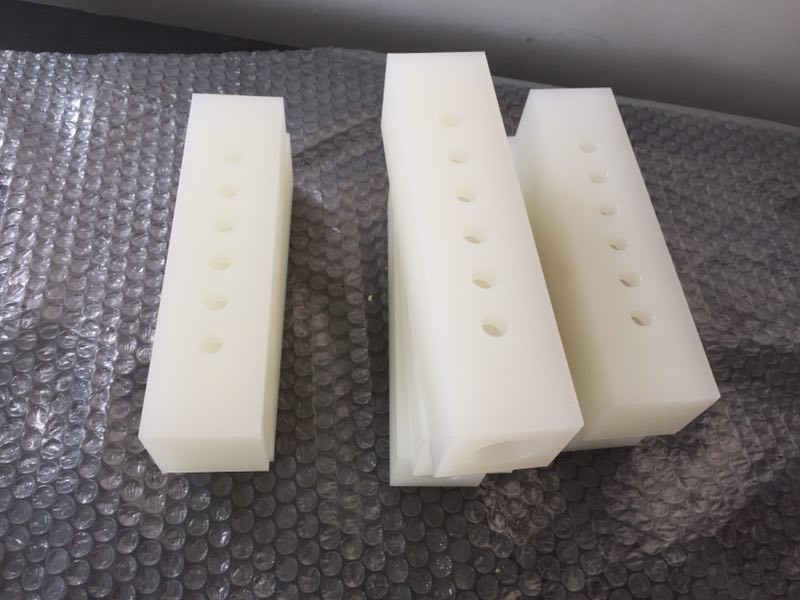
POM, or polyoxymethylene, offers incredible benefits, but its machining requires expertise and precision.
CNC machining is ideal for POM (Polyoxymethylene) parts due to its precision and ability to maintain the material's unique properties. Key benefits include:
-
High Precision:
CNC machining ensures tight tolerances, making it perfect for intricate designs and complex geometries. -
Material Integrity:
POM’s excellent mechanical properties, such as low friction, high stiffness, and dimensional stability, are preserved during CNC machining. -
Versatility:
CNC machining can handle both small-batch prototypes and large-scale production, catering to various industries like automotive, electronics, and medical. -
Cost-Effectiveness:
Minimizes material waste and offers consistent quality, reducing long-term manufacturing costs.
CNC machining delivers reliable, high-quality POM components for demanding applications, ensuring performance and durability.
Dive into its properties, benefits, and challenges to unlock its potential in various applications.
What is POM and Why is it Ideal for Machining?
POM (Polyoxymethylene), also known as Delrin or acetal, is a high-performance engineering thermoplastic known for its excellent mechanical properties and machinability. Here's why it’s ideal for machining:
1. Material Properties
- High Strength and Stiffness:
POM offers excellent dimensional stability and mechanical strength, making it suitable for precision parts. - Low Friction and Wear Resistance:
Its self-lubricating properties reduce friction, ideal for gears, bearings, and moving parts. - Dimensional Stability:
Minimal shrinkage and high resistance to deformation ensure tight tolerances.
2. Machinability
- Ease of Machining:
POM can be easily milled, turned, and drilled without cracking or chipping. - Surface Finish:
Produces smooth and polished surfaces, reducing the need for additional finishing. - Consistency:
Allows for repeatable results in both prototypes and large production runs.
3. Applications
POM is widely used in industries like automotive, electronics, and medical for components such as gears, bushings, and housings due to its durability and cost-effectiveness.
Its combination of excellent properties and ease of machining makes POM a top choice for high-precision CNC applications.
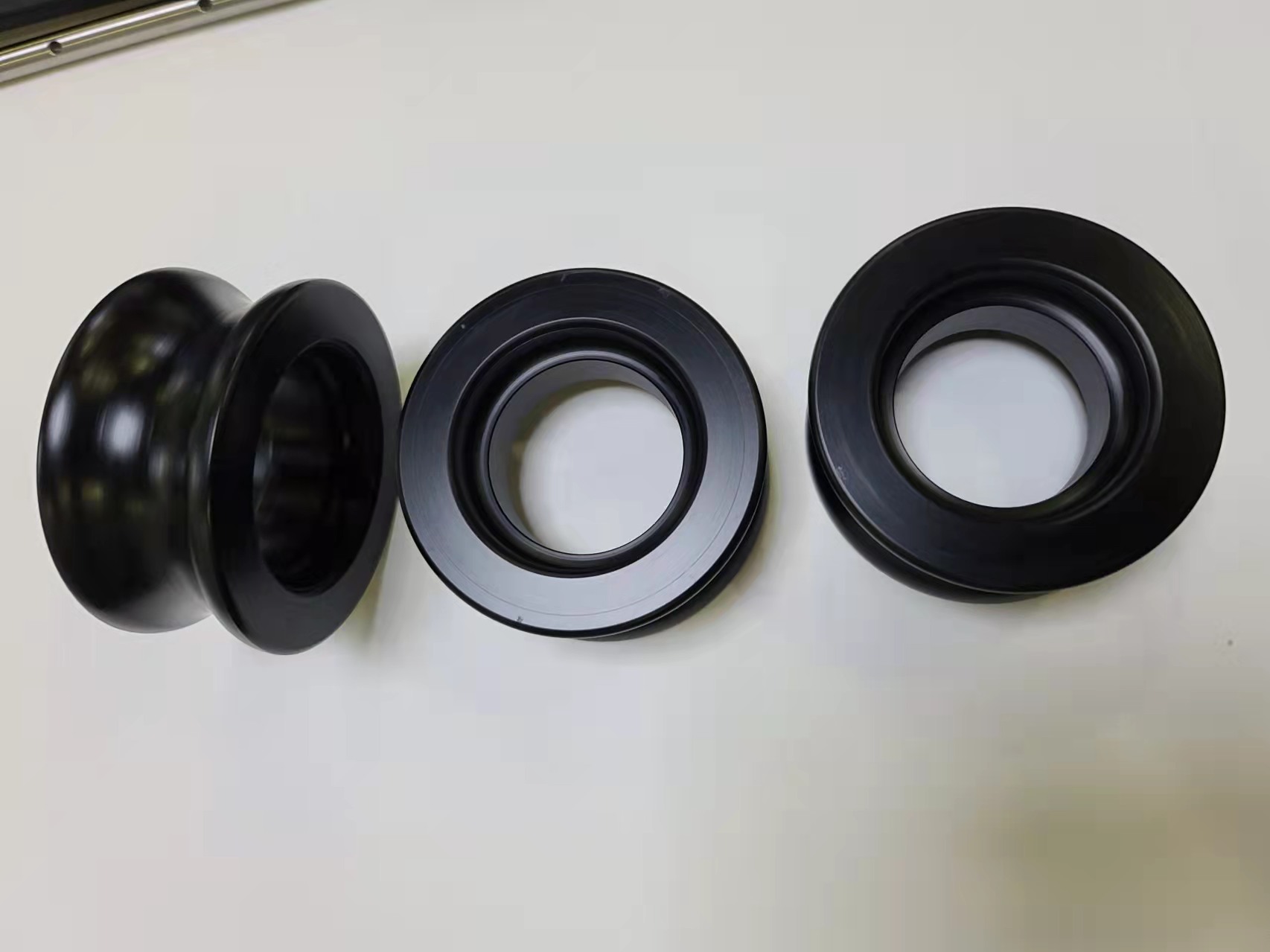
Types of POM:
| Type | Description | Typical Applications |
|---|---|---|
| POM-H | Homopolymer with higher stiffness | Gears, bushings, valve seats |
| POM-C | Copolymer with better thermal stability | Bearings, pump components, electrical insulators |
POM’s machinability stems from its low friction and high resilience, making it a preferred choice for CNC applications.
Key Properties of POM That Make It Suitable for Precision Machining
POM’s unique properties make it indispensable for industries requiring durability and accuracy.
Its mechanical properties and stability under stress set it apart for demanding CNC projects.
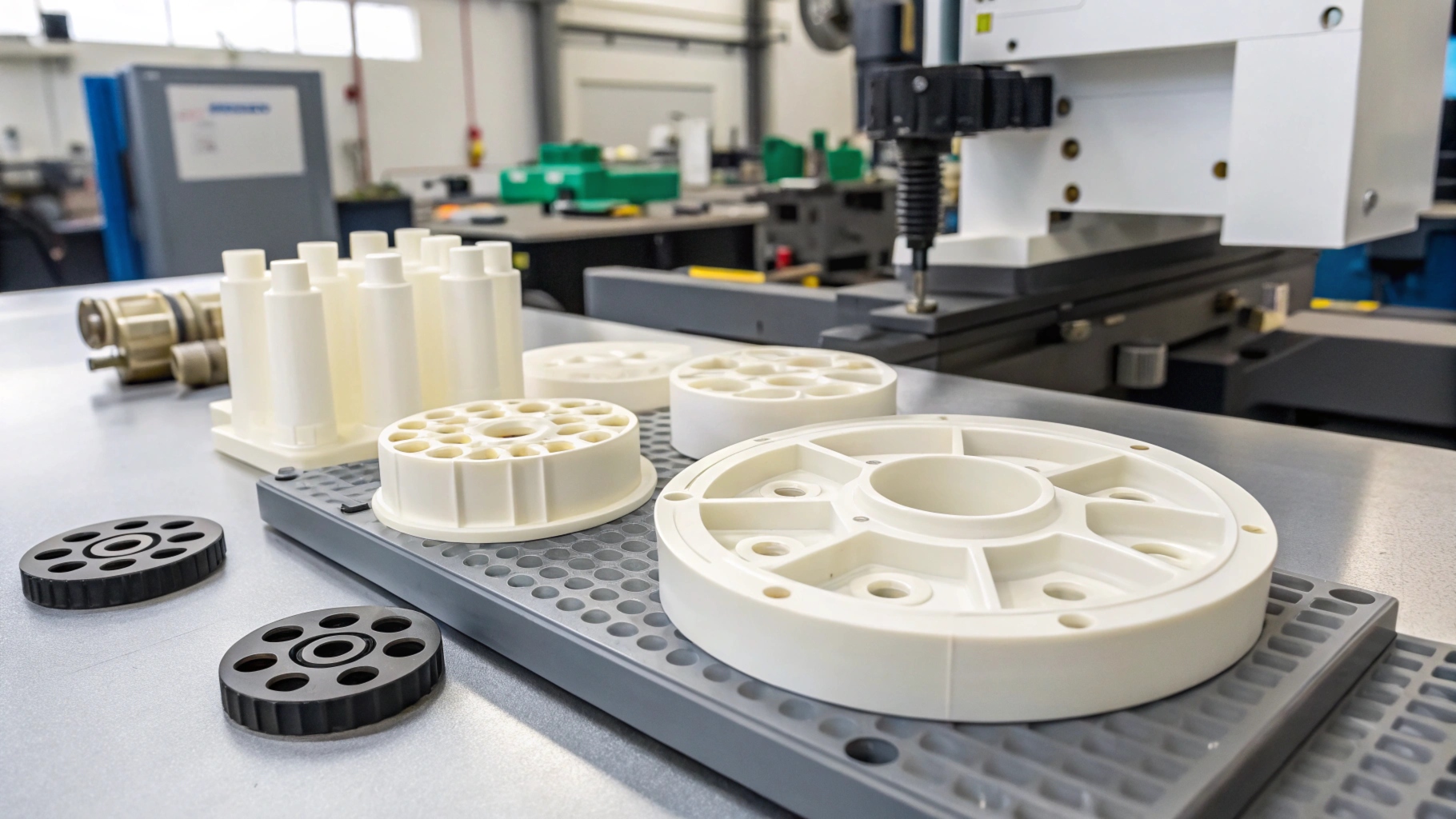
Dive Deeper into POM Properties:
-
Mechanical Strength: POM withstands high stress without deformation. This makes it perfect for high-load parts.
- Example: Automotive gears require durability under repeated use.
-
Excellent Surface Finish: POM produces smooth surfaces without additional finishing.
- Fact: Low friction ensures the parts function efficiently in moving assemblies.
Comparative Table of Engineering Plastics 1:
| Property | POM | Nylon | PTFE |
|---|---|---|---|
| Friction Coefficient | Low | Medium | Very Low |
| Dimensional Stability | High | Medium | Low |
| Wear Resistance | Excellent | Good | Fair |
POM is also resistant to solvents, enabling its use in chemically aggressive environments.
Tips for Optimizing CNC Machining of POM Parts
Precision machining of POM requires specific techniques to achieve consistent results.
Follow these proven tips to ensure accurate, high-quality POM parts.
Key Tips for POM Machining:
- Use Sharp Tools: Blunt tools can melt or distort POM during machining.
- Optimize Speeds: High-speed settings prevent overheating and ensure a clean cut.
- Manage Chip Evacuation: POM produces long, continuous chips that can clog tools.
- Solution: Employ compressed air or vacuum systems to keep work areas clean.
Challenges During Machining:
| Problem | Cause | Solution |
|---|---|---|
| Material Warping | Excess heat generation | Coolant and controlled speeds |
| Tool Wear | Hard POM surfaces | Use coated carbide or diamond tools |
| Surface Imperfections | Incorrect feed rates | Fine-tune feed and speed settings |
By following these steps, manufacturers can leverage POM’s properties to produce intricate and reliable parts.
Applications of Machined POM in Various Industries
POM’s versatility lends itself to a range of industries, from automotive to medical devices.
POM parts are integral to many applications requiring strength, durability, and precision.
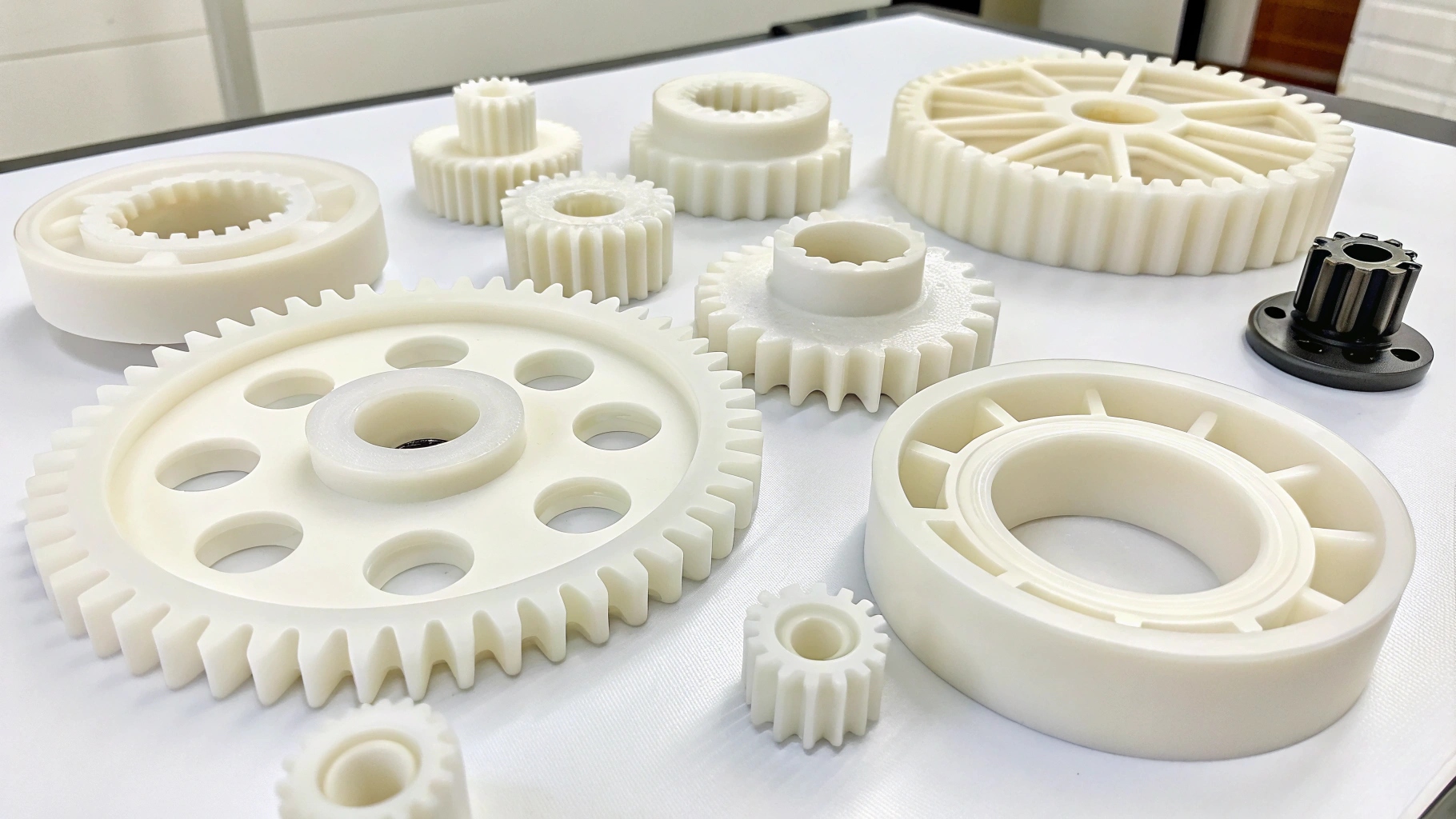
Dive Deeper into Applications:
Automotive Industry:
POM gears, bearings, and bushings improve performance while reducing maintenance costs.
- Example: Gear assemblies in automotive door locks rely on POM for its wear resistance.
Medical Devices 2:
POM’s biocompatibility and ease of sterilization make it suitable for surgical tools and components.
- Example: Insulin pumps use POM for consistent, long-term functionality.
Electronics:
POM is used for precision connectors and insulators due to its dimensional stability.
- Example: Electrical switch gears often feature POM components.
Industrial Machinery:
POM reduces friction in moving parts, enhancing equipment lifespan.
- Example: Bearings and conveyor belt rollers benefit from its self-lubricating properties.
POM’s adaptability to varied industries highlights its importance in CNC machining.
Challenges in POM Machining and How to Overcome Them
Despite its advantages, POM presents unique machining challenges that require attention.
Understanding and mitigating these challenges ensures better machining outcomes.
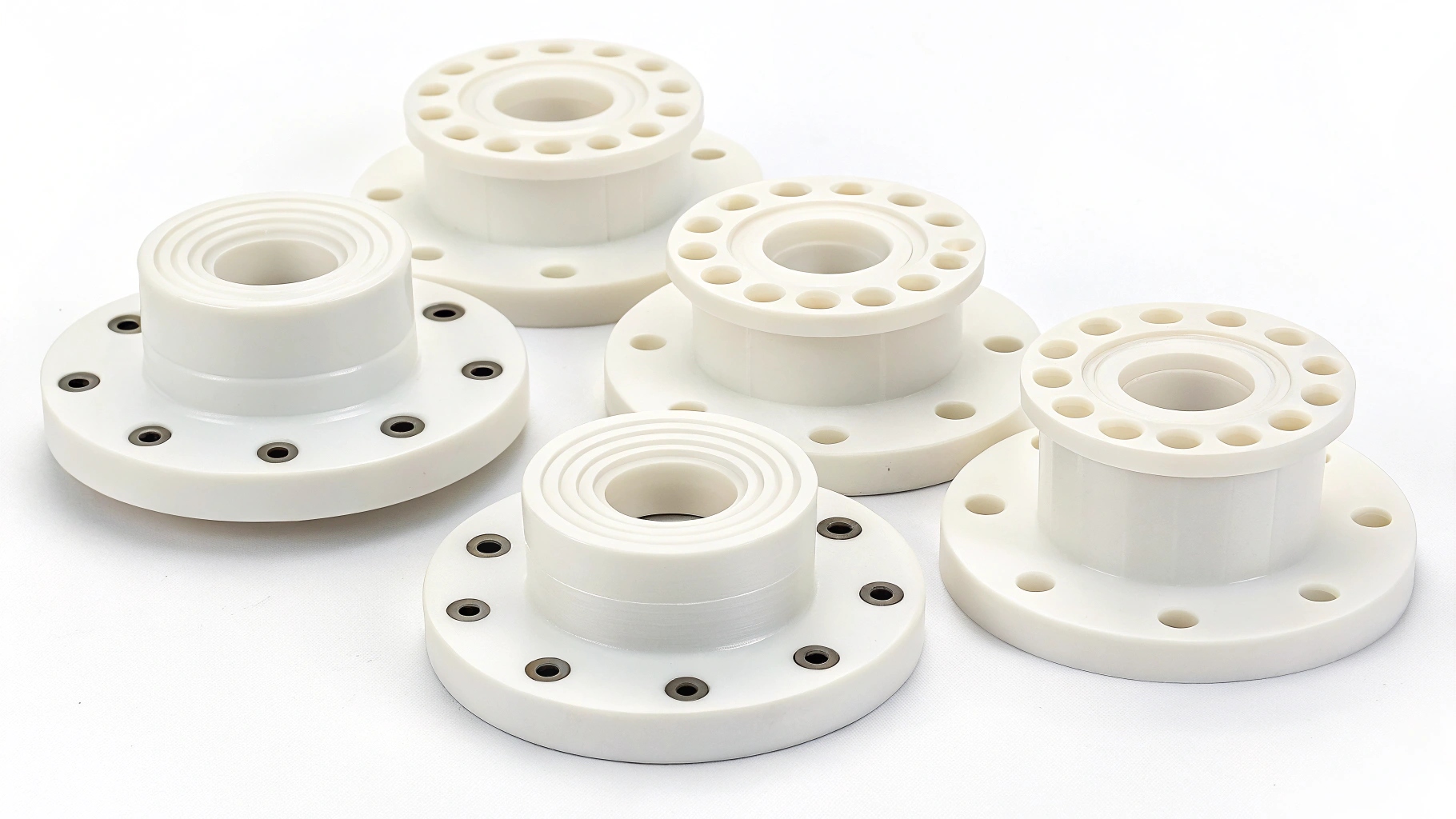
Dive Deeper into Machining Challenges:
Dimensional Stability Issues:
POM can warp if excessive heat builds during machining.
- Solution: Use lower cutting depths and apply cooling systems.
Tool Wear and Tear:
Sharp, coated tools are essential for machining POM effectively. Dull tools can lead to burrs or imperfect finishes.
- Solution: Regularly inspect and replace tools to maintain accuracy.
Chip Management:
Long chips can clog equipment, causing downtime.
- Solution: Implement chip-breaking techniques and use air or vacuum systems.
Post-Machining Considerations:
POM can experience shrinkage or dimensional changes post-machining.
- Solution: Allow parts to cool and stabilize before final measurements.
Troubleshooting Table:
| Challenge | Cause | Solution |
|---|---|---|
| Overheating | Excessive speed or feed | Adjust machining parameters |
| Inconsistent Tolerances | Material stress | Stabilize material before machining |
| Surface Scratches | Improper cutting tools | Use polished or coated tooling |
With proper planning and techniques, POM machining challenges can be effectively managed.
Conclusion
CNC machining of POM combines precision, efficiency, and versatility, making it an excellent choice for various applications.

